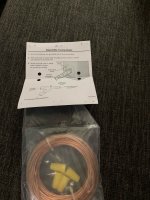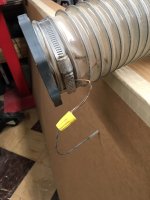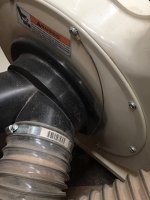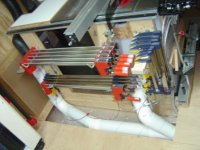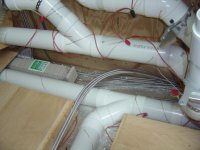mattbyington
Member
- Joined
- Mar 11, 2018
- Messages
- 797
Hey team!
As some of you know I have a Hammer A3 31 on the way.
In preparation I purchased a Rockler dust collector to get more CFM than my Festool CT.
You can see the picture I posted towards the end of this thread:http://festoolownersgroup.com/other-tools-accessories/just-ordered-a-hammer-a331!/30/
So, I purchased this grounding kit from Rockler without really knowing if it was necessary or not.
The weird thing to me is that on the label, it says to run wire both inside AND around (outside) the DC pipe.
See picture below. I was planning on only running it inside the hose - would be cleaner, simpler, and look better.
Thoughts? Is it really necessary to do both?
Thanks!
Matt
[attachimg=1]
As some of you know I have a Hammer A3 31 on the way.
In preparation I purchased a Rockler dust collector to get more CFM than my Festool CT.
You can see the picture I posted towards the end of this thread:http://festoolownersgroup.com/other-tools-accessories/just-ordered-a-hammer-a331!/30/
So, I purchased this grounding kit from Rockler without really knowing if it was necessary or not.
The weird thing to me is that on the label, it says to run wire both inside AND around (outside) the DC pipe.
See picture below. I was planning on only running it inside the hose - would be cleaner, simpler, and look better.
Thoughts? Is it really necessary to do both?
Thanks!
Matt
[attachimg=1]

